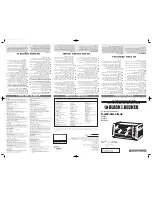
12
Minimum Vent Pipe Clearance
Wood and other combustible materials must not be closer
than 6” from any surface of single wall metal vent pipe.
Listed Type B vent pipe or other listed venting systems
shall be installed in accordance with their listing.
REMOVING EXISTING BOILER FROM COMMON
VENTING SYSTEM
When an existing boiler is removed from a common
venting system, the common venting system is likely to be
too large for proper venting of the appliances remaining
connected to it.
At the time of removal of an existing boiler, the following
steps shall be followed with each appliance remaining
connected to the common venting system placed in
operation, while the other appliances remaining connected
to the common venting system are not in operation.
Seal any unused openings in the common venting
1.
system.
Visually inspect the venting system for proper size and
2.
horizontal pitch and determine there is no blockage or
restriction, leakage, corrosion and other defi ciencies
which could cause an unsafe condition.
Insofar as is practical, close all building doors and
3.
windows and all doors between the space in which the
appliances remaining connected to the common venting
system are located and other spaces of the building.
Turn on clothes dryers and any appliance not connected
to the common venting system. Turn on any exhaust
fans, such as range hoods and bathroom exhausts, so
they will operate at maximum speed. Do not operate a
summer exhaust fan. Close fi replace dampers.
Typical Installation For Vent Damper
!
WARNING
Install the vent damper to service only the
single appliance for which it is intended. If
improperly installed, a hazardous condition,
such as an explosion or carbon monoxide
poisoning, could result.
Do not modify draft hood or vent damper during
installation.
Do not install the vent damper on pipe curve.
Do not run wires near high temperature surfaces. Use
standoff brackets if necessary.
For safe, effi cient operation, the vent damper and all
fl ue product carrying areas of the appliance must be
checked annually by you, with particular attention given
to deterioration from corrosion or other sources. If you
see corrosion or other deterioration, contact your heating
contractor for repairs. Check vent damper operation as
follows:
When the boiler is off, check that the vent damper
1.
positions indicator points to the closed position, Fig.
14.
Turn the thermostat or controller up to call for heat
2.
and check the vent damper indicator points to the open
position, Fig. 14.
Turn the thermostat or controller down again and check
3.
that the damper position indicator returns to the closed
position.
CHIMNEY AND VENT PIPE CONNECTION
Place in operation the appliance being inspected. Follow
4.
the lighting instructions. Adjust thermostat so appliance
will operate continuously.
Test for spillage at the draft hood relief opening after
5.
5 minutes of main burner operation. Use the fl ame of
a match or candle, or smoke from a cigarette, cigar or
pipe.
After it has been determined that each appliance
6.
remaining connected to the common venting system
properly vents when tested as outlined above, return
doors windows, exhaust fans, fi replace dampers and
any other gas-burning appliance to their previous
conditions of use.
Any improper operation of the common venting system
7.
should be corrected so the installation conforms with
the National Fuel Gas Code, ANSI Z223.1/NFPA 54.
When re-sizing any portion of the common venting
system, the common venting system should be re-sized
to approach the minimum size as determined using the
appropriate tables in Chapter 13 of the National Fuel
Gas Code, ANSI Z223.1/NFPA 54.
NOTICE
Vent connectors serving appliances vented by
natural draft shall not be connected into any
portion of mechanical draft systems operating
under positive pressure.
VENT DAMPER OPERATION













































